Today we’re going to explore the fado song Velha Tendinha that drops hints about the population of Lisbon and its experiences that are worth observing.
After our article Tendinha Tavern, an Old Eatery in the Modern Lisbon, we had to take a closer look at this famous fado song of the 1930s that pays homage to this establishment that was already old at the time.
Get to know Lisbon’s historic neighbourhoods in a guided tour and discover unmissable places of this magnificent city.
The Fado Song Velha Tendinha in the Portuguese Vaudeville Play Zé dos Pacatos
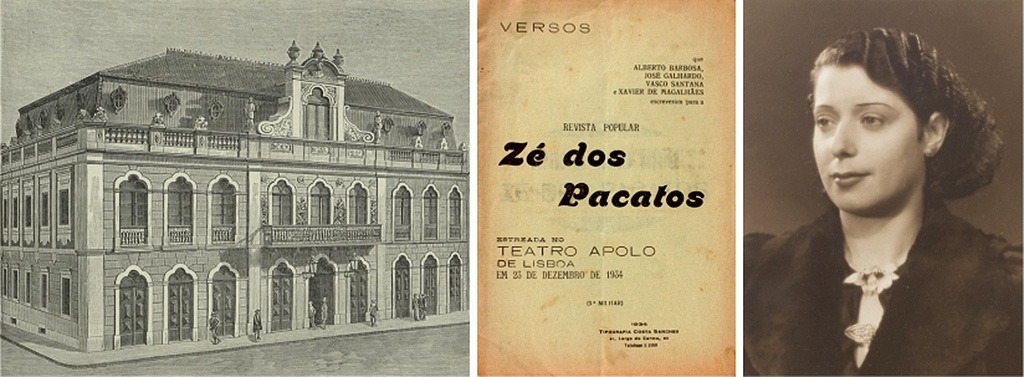
The fado song Velha Tendinha was composed for the vaudeville Zé dos Pacatos, a play with two acts by Alberto Barbosa, Xavier de Magalhães, José Galhardo and Vasco Santana, whose music was by Raúl Portela and Raúl Ferrão.
Zé dos Pacatos was an allusion to the name of a retiro (explanation below under “Os Retiros”) situated on Estrada de Sacavém, one of the exits of Lisbon that started next to the Church of São Jorge de Arroios.
Premiered in 1934 at Apolo Theatre, which has disappeared during the demolition of part of Mouraria, it was again staged in 1939 at Maria Vitória Theatre, in Parque Mayer (a theatrical and entertainment district).
With the music of Raúl Ferrão and lyrics by José Galhardo, it was interpreted and made famous by the fado singer Hermínia Silva (1907-1993) who built here one of her most famous drag king characters, Faia. This versatile artist was, in addition to being a fado singer, a theatre and film actress where she stood out for her comedic facet.
The fado song Velha Tendinha was a huge hit! In 1957 a new version was created, performed by the same artist, for the vaudeville Casa da Sorte at ABC Theatre in Parque Mayer, but Nova Tendinha didn’t reach the intensity and popularity of the one from 1934.
The Lyrics of the Fado Song Velha Tendinha
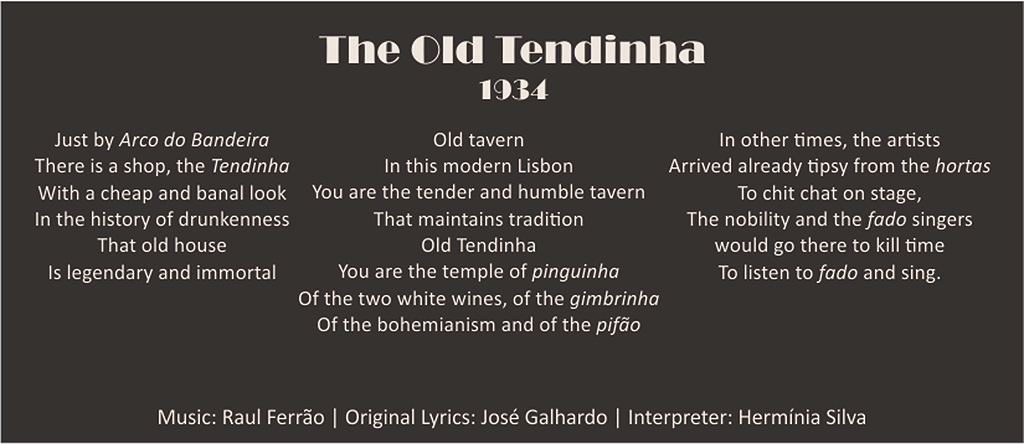
The Arco do Bandeira
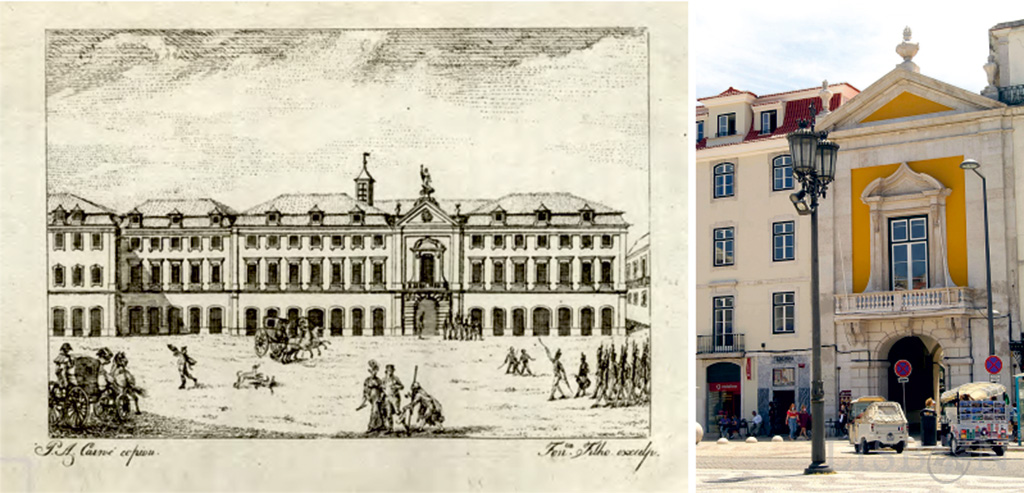
The lyrics of this famous song start by locating us the Tendinha Tavern, in the heart of Rossio next to the so-called Arco do Bandeira (Bandeira’s Arch), a building owned by a capitalist, Pires Bandeira, on Rua dos Sapateiros, connecting the two blocks of the south wing of D. Pedro IV Square.
This façade, which has a large window with a balcony, and whose body is topped by a triangular pediment, was built in the late 18th century and built similar to the central part of the palace, which was at the time on the opposite side of the square. Designed by Carlos Mardel, it was built on the site of the former Estaus Palace that had collapsed with the earthquake of 1755. The new building of neoclassical lines that then housed the Public Treasury suffered a terrible fire in 1836. It ended up being demolished and the D. Maria II National Theatre was built.
We are, therefore, in the city’s living room, a meeting place for people who every day cross the most famous pattern of Portuguese pavement, Mar Largo (large sea).


The Dois Brancos
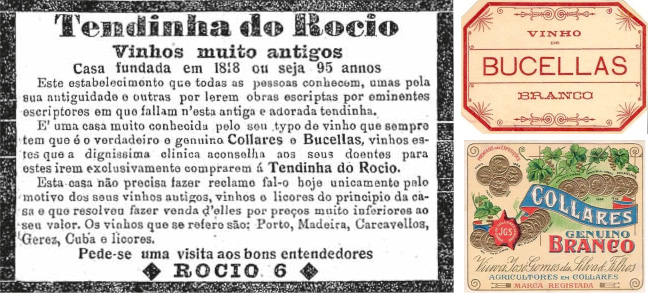
The establishment is described as a banal, vulgar, old shop with no great characteristics to be noted. However, it was this type of model of traditional taverns that at that time already clashed in a city that claimed to be modern and cosmopolitan.
Tendinha Tavern is presented as a sacred place for the consumption of pinguinha, that is, alcoholic beverages, distilled such as brandies, liqueurs or ginjinha among others.
Dois brancos, the famous two white wines marketed there since 1840, Collares and Bucellas, are particularised. Its consumption was even advised by the doctors at the time to their patients, as announced in an advertisement published in the newspaper A Capital of April 8, 1914.
The Regulars
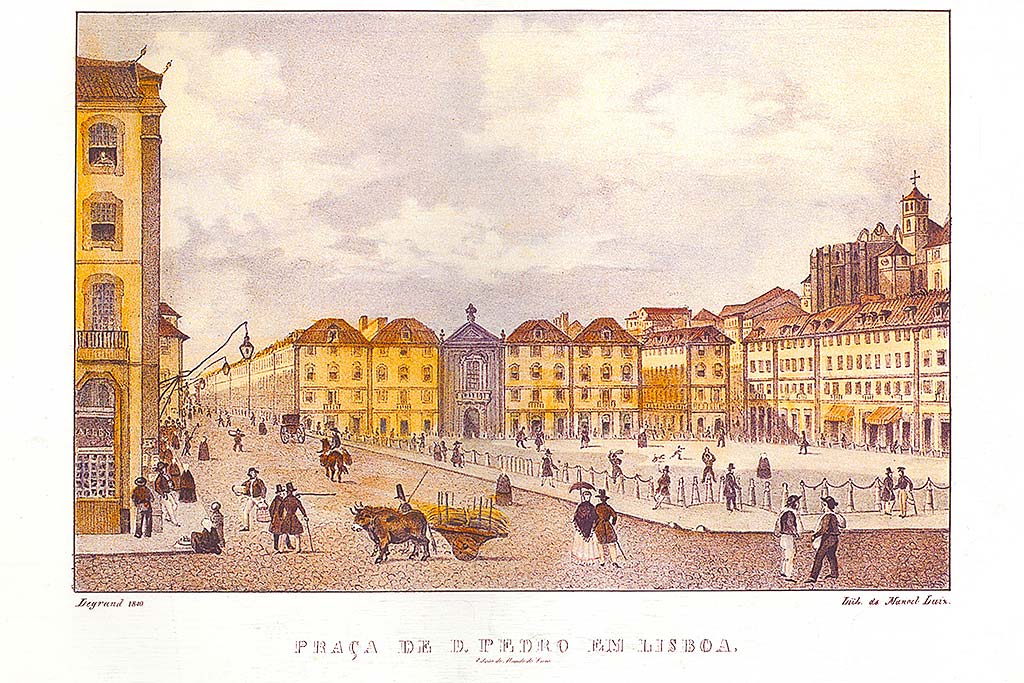
After mentioning the main products sold here, the regulars of this space are listed.
The lyricist begins by referring to the lowest and the poorest layer of the population: the gimbrinha (a term that has fallen into disuse and that many today sing wrongly as ginginha). In contrast, follows the boémia (bohemianism), a direct allusion to the nobility and artists and, finally, the pifão, the drunk regardless of being rich or poor.
The nobilities, horse riders and bullfighters stopped by there, during the times when there were bullfights in the bullring of Campo Santana. And so did the artists and intellectuals during their gatherings around a table of traditional flavours, who alternated between this kind of popular taverns, cafés such as Brasileira or Nicola and diverse restaurants such as Marrare or Tavares.
Thus, this is a tavern described as a place where all social strata are together, united by a common interest, drinking.
Even today the environment is quite heterogeneous, the visitors of Tendinha Tavern are a curious composition of different types of people, nationals and tourists…
The song doesn’t mention it but Tendinha Tavern has always been more than a place for drinks. Here, simple meals have always been served, consisting mainly of traditional soup, sandwiches and pastries.
| Never miss another article | Subscribe here |
The Retiros
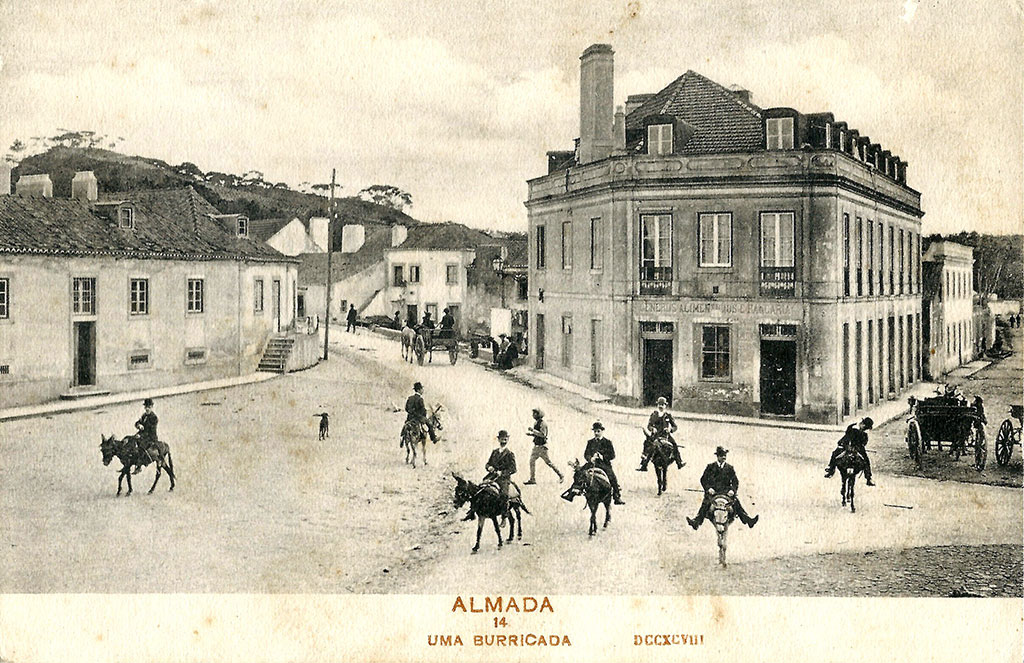
The third stanza, addresses more specifically the life of the end of the 19th century and first decades of the 20th century, when the locals of Lisbon would leave the city on Sunday on a trip to the hortas (vegetable gardens), rural areas where there were so-called retiros (retreats), restaurants that served wines and snacks, where traditional games were played and fado and other popular songs were heard and sung.
We’re talking about rural areas, today fully integrated into the city such as Benfica, where the famous Ferro de Engomar retreat was located (there is still the restaurant with the same name integrated in a building near the Beau Sejour Palace). Also Carnide, Xabregas, Campolide or Campo Grande, place of the already disappeared Quebra-Bilhas, among many others. And also on the south bank, Cacilhas, where the fun donkey rides departed towards Alfeite…
At the end of the day, already back in town, it would be time for another drink at Tendinha Tavern to chat, talk about banalities, listen to and sing fado.
With so many and such curious stories, don’t you feel like going to Rossio one of these days to have a quick meal in this discreet establishment and travel to other times to the sound of the chords of the fado song Velha Tendinha?
The project getLISBON has been very rewarding and we want to continue revealing the singularities of fascinating Lisbon.
Help us keep this project alive!
By using these links to make your reservations you’ll be supporting us. With no extra costs!
• Looking for a different experience? We can create a customised itinerary based on your interests. Contact us!
• Or if you prefer tours and other activities in various destinations, take a look at GetYourGuide.
• Save time and money with a flexible Lisbon Card!




